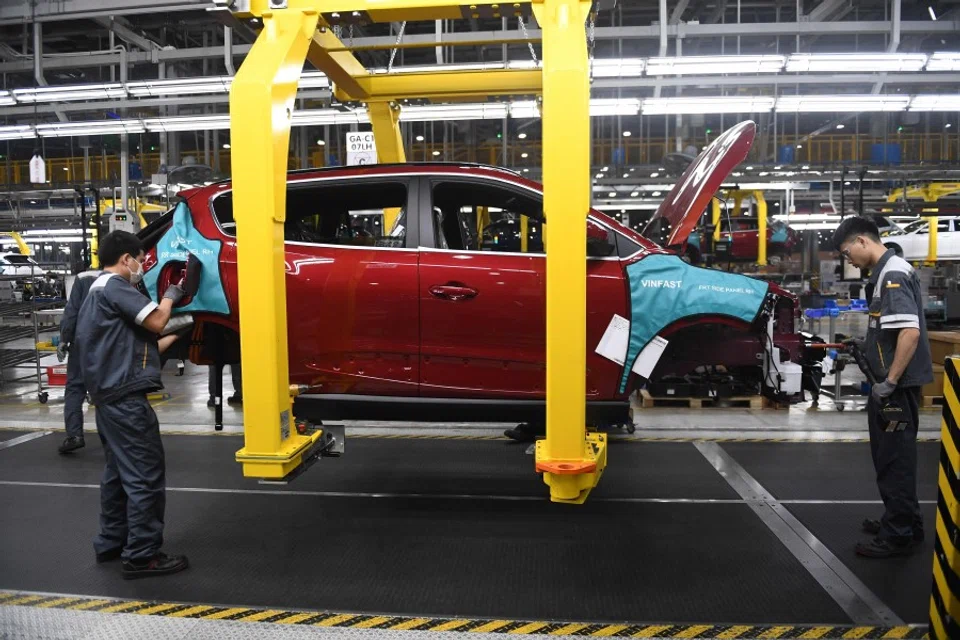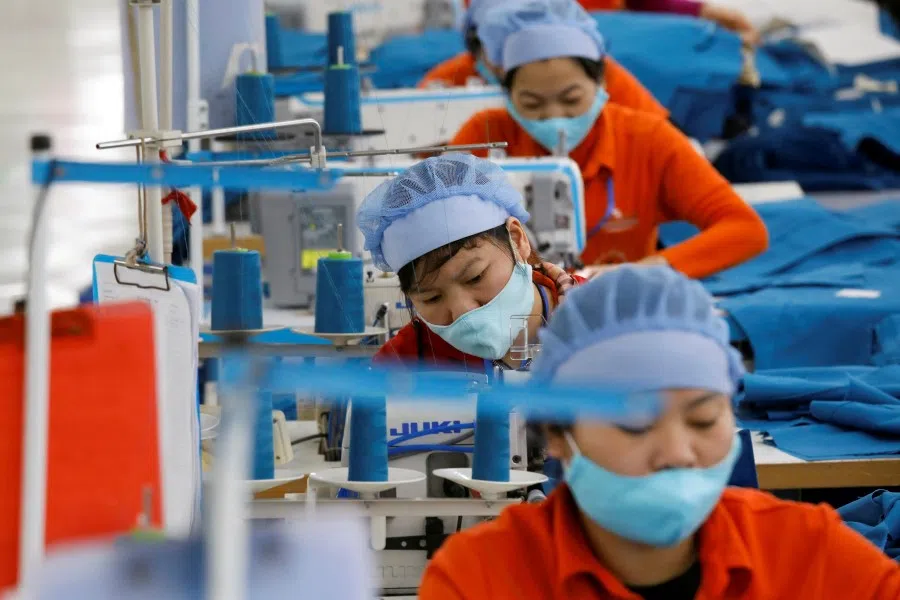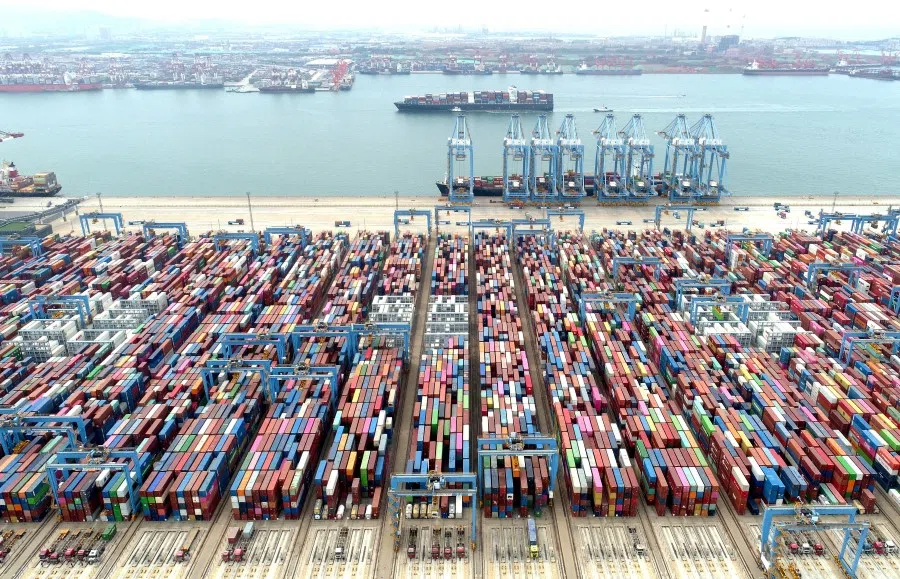Should Beijing worry about the exodus of manufacturing from China to Vietnam?
It appears that Beijing is losing some of its factory orders with MNCs and investors putting their bets on Vietnam. But maybe it is a win-win situation: as China moves to transition its economy to advanced manufacturing, countries like Vietnam with a young and relatively cheap labour force could fill the gap.

Vietnam's economy got off to a surprisingly promising start in Q1 2022 (January-March). Its GDP grew by 5.03%, compared to 4.72% in the same period last year. Total exports and imports rose by 14.4% in Q1 according to Vietnam's General Statistics Office, outstripping China's foreign trade performance which was up 10.7% over the same period.
Meanwhile, Li Ka-shing, one of Asia's most influential businessmen, recently withdrew his British assets and has chosen Vietnam as his next investment goal. The investment will mainly focus on real estate projects as well as infrastructure projects. This leads many people to believe that the country has great potential for economic growth.
Indeed, Vietnam's unexpected high economic growth has drawn the attention of global investors and business owners. Some analysts say that Vietnam is "copying" China to accelerate its economic growth and the country is experiencing a manufacturing boom. In contrast, China is facing a manufacturing exodus and is under great pressure to upgrade and transform its industrial sector.
Manufacturing accounted for 38% of China's GDP in 2020. Should China worry about large factory orders flowing out to other countries like Vietnam? What is the impact on other ASEAN members?

Thus far, China has played an important role in the global supply chain. It has maintained its lead in manufacturing for decades, owing to its relatively complete supply chain, well-developed infrastructure and huge domestic market. But an eventual manufacturing exodus is inevitable, as a result of rising labour costs, the transition and upgrading of China's manufacturing, as well as external pressures.
China used to have the world's largest and youngest workforce. However, over the course of the past several decades, its demographic dividend has gradually declined. And the trend is irreversible.
Rising labour costs
One of the factors is rising labour costs in China. As of 2020, the average wage in the manufacturing sector in China increased to approximately 82,800 RMB from 30,700 RMB in 2010, according to market and consumer data portal Statista. Labour cost determines production cost. In general, lower labour costs indicate lower production costs, and lower production costs imply higher profit margins. No firm is willing to build their factory in a place where the labour costs are too high. Once the costs get too high, they will start laying off workers and turn to automation or relocate to a cheaper destination.
In that regard, Vietnam is looking increasingly attractive as an investment destination. With a young, growing population and a cheap labour force, it has fast become a good alternative for outsource manufacturing. China used to have the world's largest and youngest workforce. However, over the course of the past several decades, its demographic dividend has gradually declined. And the trend is irreversible.
China's implementation of the one-child policy in the 1980s placed strict limits on the number of children each family can have. Although the policy has since ended and a three-child policy is currently being promoted, China's birth rate still dropped to record lows according to recent data. This caused the country's population structure to change and the labour force to shrink.
...when the labour force and an industry sector are mismatched, the industry will be likely to shift to a new destination.

Moreover, a smaller labour force, as well as rising rates of college education, have changed young people's job preferences. People of the younger generation in China do not want to work long hours on a production line. They prefer to seek out more flexible and less physically demanding jobs, for instance in the delivery services sector. Repetitive and boring work in a factory is the last thing on their minds. Generally, when the labour force and an industry sector are mismatched, the industry will be likely to shift to a new destination.
Transitioning and upgrading China's manufacturing sector
Another domestic factor is the transitioning and upgrading of China's manufacturing sector. In 2021, Beijing introduced a comprehensive plan to upgrade its manufacturing capabilities by 2025 so that the country can transition from being a labour-intensive workshop to a more technology-intensive powerhouse. As such, the advanced manufacturing sectors, including robotics, aircraft engines, high-end medical equipment and innovative medicine, new energy vehicles and smart cars, will be getting more policy support as compared to traditional manufacturing sectors, such as textiles, toys, clothes, footwear, and furniture.
To achieve its goals, the authorities will be willing to accept moderately slower economic growth as they focus on building a modern industrial system and seeking more balanced development. This indicates that China is prepared to leave the work of the lower-valued, labour-intensive and environmentally-unfriendly production work to others.
For example, from 2019 to 2021, Apple consolidated its supply chain and relocated the very end of the value chain - final assembly - from China to Vietnam. Meanwhile, Apple has increased reliance on Chinese suppliers by adding 14 more suppliers located in mainland China to its supply chain list. Most of them are high-value and knowledge-intensive manufacturers of intermediate goods specialising in optical components and connectors, according to a report by Chinese state media Global Times.
...the rise of China's own brands of electronic products plays a part in the move of the production to Southeast Asian countries. Samsung has lost its market share in China.

Samsung Electronics is another example. The company moved most of its production lines for simple components (audio, video and printed circuit boards (PCBs)) and assembly from China to Vietnam, relocating most of the knowledge-intensive segments back to its own country, and leaving the middle part of the production chain and intermediate goods to China. China still makes up nearly 13% of the company's supply chain.
Furthermore, the rise of China's own brands of electronic products plays a part in the move of production lines to Southeast Asian countries. Samsung has lost its market share in China. For example, in China's smartphone market in Q4 2021, Huawei, Oppo, Vivo and Xiaomi took up 66% of the total market share. Apple took up 22%, while the rest of the pie went to other brands including Samsung. To some extent, it reflects consumer preferences in China. They prefer local brands to foreign brands.
The very recent lockdown in Shanghai seriously disrupts global supply chains. The impact could last through 2022 and beyond...
US-China trade war and China's zero-Covid policy
Externally, the US-China trade war has dealt a blow to Beijing's lead in the manufacturing sector. The US is currently imposing a 25% tariff on approximately US$250 billion of imports from China and a 7.5% tariff on approximately US$112 billion worth of imports from China. It has directly reduced its export volume to the US, and other countries are under pressure to reduce their reliance on Chinese manufacturing. The increase in tariffs has motivated companies to pull production out of China.
What's more, companies from the US and other countries have come up with a strategy called "China plus one", which refers to the business strategy to avoid investing only in China and diversifying the business into other countries. The purpose of the strategy is to deal with the uncertainties stemming from US-China relations as well as border closures owing to Covid-19.
The very recent lockdown in Shanghai is seriously disrupting global supply chains. The impact could last through 2022 and beyond, according to an analysis by the research firm Resilinc. China's zero-Covid policy has led to a substantial decrease in traffic at ports as well as a sharp drop in production output. This has forced many manufacturers to cope with higher costs, delays and backlogs.

China's quarterly production of semiconductors shrank for the first time since early 2019, owing to the disruptive effects of the lockdown. Furthermore, five major car companies in Shanghai saw production plunged by 75% in April from March, the China Passenger Car Association said.
As for Southeast Asian countries, they should quickly identify and take advantage of the opportunities brought about by the crisis of pandemic as well as the crisis of global supply chain strain.
Southeast Asian countries can seize the opportunities
The negative impacts of the policy on the manufacturing industry and other industries have been reflected in China's economic data in April. According to a CNBC news article, industrial production dropped by 2.9% in April from a year ago. Retail sales fell by 11.1% in April from a year ago, which is more than the 6.1% decline predicted in a Reuters poll. Furthermore, the unemployment rate in China's 31 largest cities climbed to a new high of 6.1% in April.
China's strict Covid control policy is worrying many manufacturers. To some extent, it has also destroyed business confidence in the country. In the short run, manufacturers may not be able to move out of China as it involves higher moving-out costs. But in the long run, they must search for substitutes. Southeast Asian countries could be their next best alternative.
China currently still plays an important role in the global supply chain. Moving lower-end production to other countries is a natural result of economic development. What is more worrying is the ongoing Covid policy. It makes a Chinese GDP rebound unlikely in the short run, exacerbating global supply-chain pressures and inflation concerns.
As for Southeast Asian countries, they should quickly identify and take advantage of the opportunities brought about by the crisis of pandemic as well as the crisis of global supply chain strain. For example, Singapore has a stable political and economic environment as well as many highly skilled talents. Thus, it is an appealing city for tech firms, and is poised to become Asia's Silicon Valley. On its part, Vietnam has the greatest capacity to offer a young and cheap labour force, and is set to be a new and popular manufacturing hub. Every country should develop its own advantages and search for the right path to develop its economy.
Related: Vietnam needs to do more to reduce trade dependence on China | Vietnam is balancing China-US rivalry with deft statecraft, but for how long? | Foreign investors exiting China: Vietnam milks the gains | Chinese manufacturing must grow in strength, not just size | Why China has too many graduates and not enough skilled workers | Is a zero-Covid policy adversely affecting China's economic recovery?

![[Big read] Paying for pleasure: Chinese women indulge in handsome male hosts](https://cassette.sphdigital.com.sg/image/thinkchina/c2cf352c4d2ed7e9531e3525a2bd965a52dc4e85ccc026bc16515baab02389ab)


![[Big read] How UOB’s Wee Ee Cheong masters the long game](https://cassette.sphdigital.com.sg/image/thinkchina/1da0b19a41e4358790304b9f3e83f9596de84096a490ca05b36f58134ae9e8f1)
